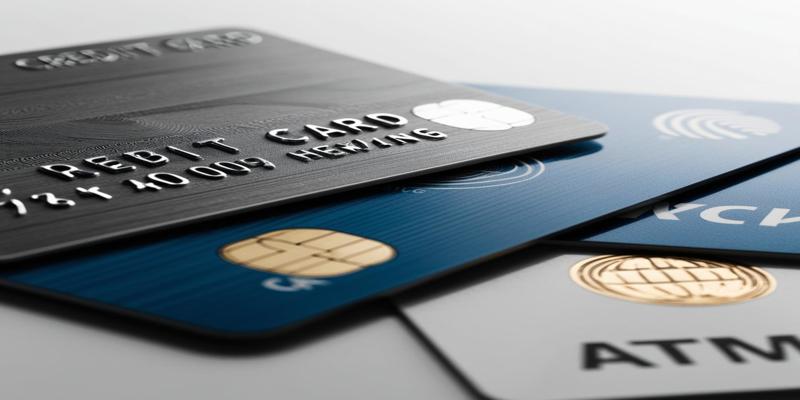Difference Between ATM, Debit, And Credit Card
Dec 09, 2024 By Verna Wesley
In today's digital world, plastic has become the preferred payment method over cash. But with so many available card options, knowing their differences becomes quite important. This article will explain each of these means of payment, describing the peculiarities, benefits, and disadvantages involved.
Understanding ATM Cards
 ATM cards, popularly known as cash cards, are basic financial tools that have revolutionized the means of accessing cash. These cards work like a key that unlocks your bank account, making many transactions possible on Automatic Teller Machines (ATMs).
ATM cards, popularly known as cash cards, are basic financial tools that have revolutionized the means of accessing cash. These cards work like a key that unlocks your bank account, making many transactions possible on Automatic Teller Machines (ATMs).
Functionality and Features
Cash withdrawal is the most basic function of an ATM card, but many ATM cards are open to this functionality. You can:
- Balance inquiry
- Transfer funds between linked accounts
- Deposit cash or checks
- Change your PIN
Remember, this card cannot typically be used at a point-of-sale location and cannot be used to make web purchases.
Security Features
Your ATM card has a unique PIN that protects your account from unauthorized access. Always cover the keypad when entering your PIN when using your ATM card to prevent potential onlookers from capturing this sensitive information.
Fees and Limitations
While using an ATM card definitely has conveniences, be very aware of the potential fees. Most banks charge for using any other bank's ATM. In addition, your bank and/or the hosting ATM may have daily withdrawal limits.
How They Differ from Other Types of Cards
Unlike debit or credit cards, ATM cards are exclusively used for transactions through ATMs. They cannot access purchases in stores or online. This in-built usage limitation might benefit some since it could compel them to make fewer expenses or enable them to keep being cash-based in their transactions.
How Debit Cards Work
Direct Link to Your Bank Account
A debit card is a direct window to your checking account. Using a debit card by swiping, inserting, or tapping, you access the funds held in your bank. It means a real-time connection with the outcome where the transactions get processed in real time by deducting the purchase amount from your account balance.
Transaction Processing
This occurs in several quick steps whenever you purchase using your debit card. First, the merchant's point-of-sale system notifies your bank of the transaction and confirms whether you have adequate money in your account. If confirmed, the transaction is approved, and that amount is in your account. That hold then becomes a permanent deduction within a few business days.
PIN-Based vs. Signature-Based Transactions
You have two major transaction options with debit cards: PIN-based and signature-based. A PIN transaction involves using your personal identification number, which makes the transaction more secure. On a signature-based transaction, you may need to sign a receipt much like you would for a credit card purchase. Many merchants today will bypass the signature step on smaller purchases to speed you through the checkout process.
Overdraft Considerations
If you use a debit card, an important thing to watch for is a balance in your account. Unlike credit cards, debit cards pull funds from available money. When you try to purchase more significant than your balance, the transaction might still need to be completed. Many use overdraft protection, but this comes with associated fees and should be used sparingly.
How Credit Cards Work
 Credit cards are potent financial instruments that extend credit to you. They enable you to make purchases on credit, basically borrowing the money from the card issuer. Unlike debit cards, which draw directly from your bank account, credit cards provide a line of credit that you can use and repay later.
Credit cards are potent financial instruments that extend credit to you. They enable you to make purchases on credit, basically borrowing the money from the card issuer. Unlike debit cards, which draw directly from your bank account, credit cards provide a line of credit that you can use and repay later.
How Credit Cards Work
Using credit cards involves borrowing money from the card issuer to make purchases. Every month, you would be sent a statement showing how many times you used your card for a transaction, with the total amount owed. You can now pay the whole or minimum payment, whichever you prefer while owing interest on the remainder.
Key Credit Card Features
Credit cards possess some unique benefits:
- Rewards Programs: Many cards offer cashback, points, or miles on purchases. Building credit by responsible usage is bound to improve one's credit score.
- Fraud Protection: Credit cards generally offer better fraud protection than debit cards.
- Purchase Protection: Some cards extend warranties or insure purchases.
How to Choose the Right Credit Card
When choosing a credit card, consider the annual percentage rate (APR), annual fees, rewards programs, credit score needed, extra perks, travel insurance, and concierge services.
Critical Differences Between ATM, Debit, and Credit Cards
Functionality and Access to Funds
ATM, debit, and credit cards have different functions and ways of accessing your money. The ATM card is the most basic. These cards allow you to withdraw cash from automated teller machines. Debit cards provide a more comprehensive range of functions, serving as both ATM cards and means to pay for things from funds drawn directly from your checking account. Credit cards, however, extend a line of credit from the issuing bank so that you can go out and make purchases and then return later to pay.
Payment Processing and Merchant Acceptance
Whereas debit and credit cards both have wide acceptance by merchants, an ATM card has limited application outside of cash withdrawal. Debit card transactions usually process right away, taking funds directly from your bank account. Credit card payments entail the creation of a balance you are under obligation to repay, normally with interest if not repaid in full every month. This distinction in processing impacts how you budget and manage cash flow.
Security Features and Liability
Each type of card provides different levels of protection against theft and fraudulent use. Credit cards usually have the best security, which is reinforced by federal laws that limit your liability for unauthorized charges to $50. Debit cards are a little riskier, as there are more significant liabilities if you don't report unauthorized use in time. Being the least sophisticated of these three, an ATM card may have the weakest security features, so it is vital to protect your PIN well.
Impact on Credit Score
Unlike ATM and debit cards, credit cards can significantly influence your credit score. Responsible credit card use, including timely payments and maintaining a low credit utilization ratio, can help build a positive credit history. This can be advantageous when applying for loans or other financial products. However, ATM and debit card usage typically don't affect your credit score since these transactions don't involve borrowing money.
Conclusion
Knowing the difference between an ATM card, a debit card, and a credit card can make all the difference in managing one's finances effectively. Each card has a different purpose, considerations, and accompanying benefits. By selecting a proper card to suit your needs and using it responsibly, you will have better financial security, build credit, and access to your money with convenience.








